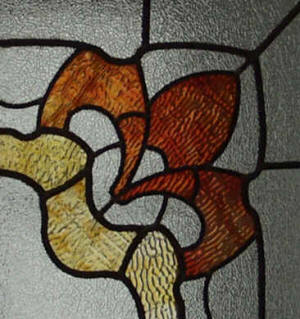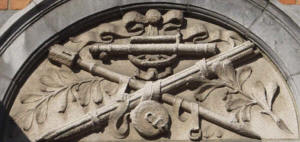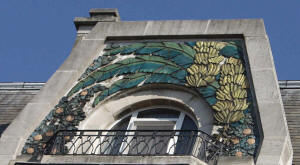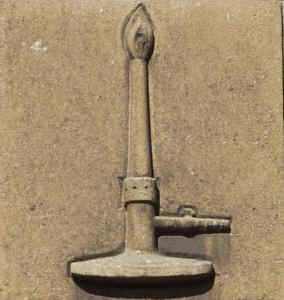| Brussels 22nd - 24th October 1999 Researched and led by Sue Hayton Just a few pictures of some of the things we saw. |
|
| Fourteen people joined the tour and travelled around the city using the Brussels equivalent of the one-day travel card, which is excellent value, and during our stay used all three of the transport modes available - tram, metro and bus. | |
| The Friday afternoon was spent in the central area of the city.
We started at the Petit Sablon in the rue Royale where there are reminders of the Tour und Taxis family (see below).
Going downhill we passed a number of metal-framed department stores, the National Bank, the Gare Central and one of the earliest shopping arcades in Europe, the Galerie St Hubert.
The Magasins Waucquez store has been converted to house the Museum of the Comic Strip, and we were able to enter and admire the interior.
Continuing downhill we walked through the famous Grand Place with its guild houses and City Hall.
The last part of this walk took us to the Bourse and the art nouveau Falstaff Brasserie.
On the way back to the hotel some of us had a look at some of the art nouveau buildings in the suburb of St Gilles.
In the evening Sue gave us a talk about industrial Brussels.
Right: Detail of stained glass roof in Cartoon Museum |

|
| On Saturday morning we took a tram to the Botanical Gardens, where we admired the 1820s glass house, and a ride on two metros took us to the area of the Tour und Taxis complex.
Franz von Thurn und Taxis in the Hapsburg Empire started the first international postal service in 1516.
Over the next 400 years the service improved and grew so that it was carrying goods of all sorts, money and passengers all over Europe.
In the 1890s a canal was built to enable sea-going ships to reach Brussels.
In 1897 the building of what became a vast freight complex began and eventually a complete interchange between road, rail and canal was achieved.
An overview of the extensive railway sidings was obtained from a bridge over the railway leading to the complex but the most impressive remains are three enormous freight sheds in the rue Picard and an equally large customs house on the Avenue du Port.
We spent some time exploring this area where there are many other vestiges of its past in freight forwarders' premises and warehouses.
Right: Pediment detail close to Tour & Taxis site |
 |
| We returned to the St Catherine area. The Place St Catherine with two water features, is all that remains of a dock - an arm of the River Senne - most of which has been covered over.
Nearby is a fruit importer's office decorated with oranges and bananas in glazed terra cotta.
Right: Detail of the ceramic work on the fruit importer's building |
 |
|
In the afternoon we went to Anderlecht. First to a disused tram depot then, down the rue L Delacroix, we stopped outside a building where we could hear the clank of metal on metal.
It was the School of Farriery. We went into the courtyard (none of us understood the no entry sign!) and saw farriers at work and in one corner a horse was being shod. We crossed the canal on a bridge rebuilt after the Second World War but the art deco decorations of market activities have been retained.
A little further on we came to the 100m-square iron hall of the cattle market. The structure has been threatened with demolition but there is still a weekly cattle market and other sales on other days.
Past a technical school we came to the Musée Bruxellois de la Gueuze in the rue Gheude. The principle of gueuze brewing is spontaneous fermentation which occurs thanks to certain bacteria only found near the river in Brussels. The Cantillon family has been brewing here since 1900. Lambic beer can be drunk in a few weeks. Gueuze is aged for three years and then blended with younger lambic. Kriek is flavoured with fruit. Connoisseurs say gueuze is the 'champagne of beers'. A visit to the brewery is a 'must'. |
|
| Sunday morning gave us time for an extensive walk around the exhibition area of Heysel and the suburb of Schaerbeek, where there is a large complex of sidings, an interesting railway station, a market and more art nouveau houses.
Right: Bunsen burner in architecture detail on a building at Schaerbeek Station |
 |
| Words by Bill Firth, from the GLIAS Newsletter No 185, December 1999 | |
| All images Copyright © Dan Hayton 2003 | |
